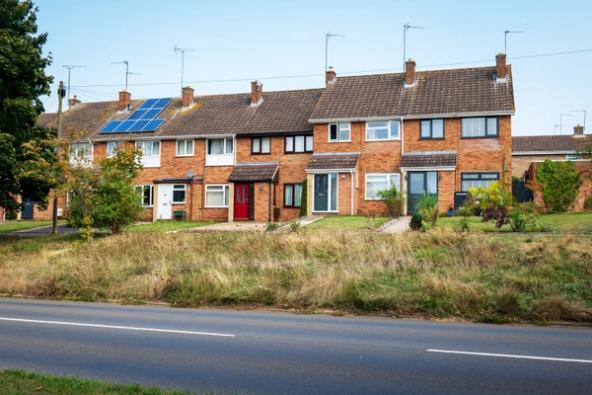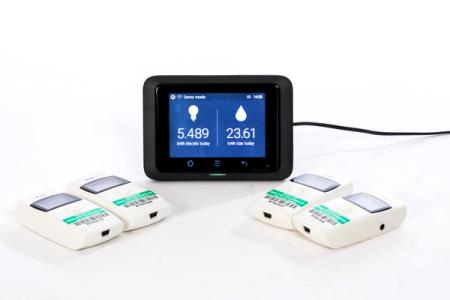Article
Leveraging the latest warm homes fund awards for sustainable, healthy housing.
The latest round of Warm Homes Fund Awards presents an opportunity to speed up housing stock decarbonisation and alleviate fuel poverty. It is vital that these funds should be directed using a two-pronged approach: comprehensive building retrofit and rigorous building performance measurement. This is not only essential for maximising the impact of the WHFA but also for creating healthy, comfortable and sustainable homes for all, especially in light of recent legislative changes like Awaab's Law.

The Warm Homes Fund, designed to improve energy efficiency in low-income households, offers a vital lifeline to those struggling with rising energy costs and living in thermally inefficient homes. However, simply installing basic insulation measures will not be enough to achieve the long-term goals of reducing carbon emissions and creating genuinely warm and healthy living environments. A holistic and data-driven approach is paramount, focusing on interventions that deliver not only the greatest possible impact but which are then also checked and verified to be sure that the intended outcomes have been achieved.
The Imperative of Deep Retrofit
Retrofit goes beyond superficial upgrades. It involves a whole-building approach to improving energy performance, addressing issues like insulation, ventilation, airtightness, and heating systems in a coordinated manner. This ensures that improvements work together, preventing unintended consequences such as damp and condensation, and delivering significant and lasting reductions in energy demand.
The Indispensable Role of Building Measurement
Investing in any form of retrofit or refurbishment without robust building performance measurement is akin to navigating without a compass.
To ensure the effectiveness of the Warm Homes Fund and deliver genuine improvements to residents' lives, comprehensive measurement at every stage is crucial.
This includes:
- Pre-retrofit assessment: Thorough assessments using tools like SmartHTC, U-value measurement and airtightness testing are essential to understand the existing condition of the building, identify key areas for improvement, and establish a baseline for performance.
- During-retrofit quality control: Regular inspections and testing during the retrofit process are vital to ensure that work is carried out to a high standard and that the intended performance levels are being achieved. This might involve checking the continuity of insulation layers or conducting interim airtightness tests.
- Post-retrofit evaluation: Once the retrofit work is complete, measurement should again be used to verify that intended outcomes have been delivered. This could include post completion airtightness tests, ventilation testing and commissioning, verification of post insulation U-values, overall insulation continuity and SmartHTC whole building heat loss measurements. These measured parameters can be checked against the original design intent and may also be used as part of the process of updating the EPC record for the property and helping to inform. The measurement and verification of delivered performance may also be part of the contract terms, impacting final payments or aiding a dispute resolution process.
- Long-term monitoring: Implementing smart building technologies and sensors to monitor energy consumption, indoor environmental quality, and system performance over time can provide valuable data for ongoing optimization and maintenance, ensuring the long-term benefits of the retrofit are maintained and that any issues that crop up can quickly be acted upon.
Awaab's Law: A Stark Reminder of the Importance of Healthy Homes
The tragic case of Awaab Ishak and the subsequent introduction of Awaab's Law underscores the critical importance of addressing damp, mould, and poor ventilation in social housing. These issues are often exacerbated by inadequate insulation, uncontrolled air leakage and underperforming ventilation. The Warm Homes Fund provides an opportunity to proactively address these problems through deep retrofit measures and rigorous building performance measurement. By focusing on creating airtight and well-ventilated homes, the fund can contribute significantly to preventing the conditions that lead to damp and mould, safeguarding the health and well-being of residents.
Combining Retrofit and Measurement for Maximum Impact
The true power of the Warm Homes Fund will be unlocked by recognizing the symbiotic relationship between retrofit and building measurement. Measurement informs the design of effective retrofit strategies, ensures quality installation, verifies the achieved performance, and provides valuable data for future improvements.
- Data-driven decision making: Pre-retrofit assessments provide the data needed to tailor retrofit measures to the specific needs of each property, ensuring that the funds are used most effectively.
- Accountability and transparency: Post-retrofit measurement provides evidence of the impact of the investment, ensuring accountability and transparency in the use of public funds.
- Continuous improvement: Long-term monitoring provides valuable data for identifying areas for further optimization and informing future retrofit programs.
- Resident well-being: Measuring indoor environmental quality ensures that retrofit measures not only reduce energy consumption but also create healthier and more comfortable living environments for residents, directly addressing concerns highlighted by Awaab's Law.
Recommendations for Spending the Warm Homes Fund
To maximize the impact of the latest Warm Homes Fund awards, it is worth considering the following:
- Prioritize deep retrofit projects: Allocate a significant portion of the funding to projects that adopt a whole-building approach to energy efficiency improvements.
- Mandate comprehensive building measurement: Make pre-retrofit assessment, during-retrofit quality control, and post-retrofit evaluation, including airtightness testing, a mandatory component of all funded projects.
- Invest in training and skills development: Ensure that there is a skilled workforce capable of delivering high-quality deep retrofit and conducting accurate building performance measurements.
- Support innovation in measurement technologies: Encourage the adoption of innovative measurement technologies and data analysis tools to improve the efficiency and effectiveness of building performance evaluation.
- Promote collaboration and knowledge sharing: Foster collaboration between housing providers, contractors, and measurement specialists to share best practices and lessons learned.
- Integrate Awaab's Law considerations: Explicitly address the risks of damp, mould, and poor ventilation in retrofit strategies and use measurement to verify improvements in indoor air quality.
Conclusion
The latest Warm Homes Fund awards represent a crucial investment in the future of our housing stock and the well-being of our communities. By strategically directing these funds towards comprehensive deep retrofit measures and mandating rigorous building performance measurement, we can ensure that this investment delivers lasting benefits in terms of reduced energy consumption, lower fuel bills, healthier homes, and progress towards our net-zero targets.
Build Test Solutions stands ready to support housing providers and contractors in embracing this approach, providing the tools and expertise needed to build a more sustainable and healthy housing future for all.




